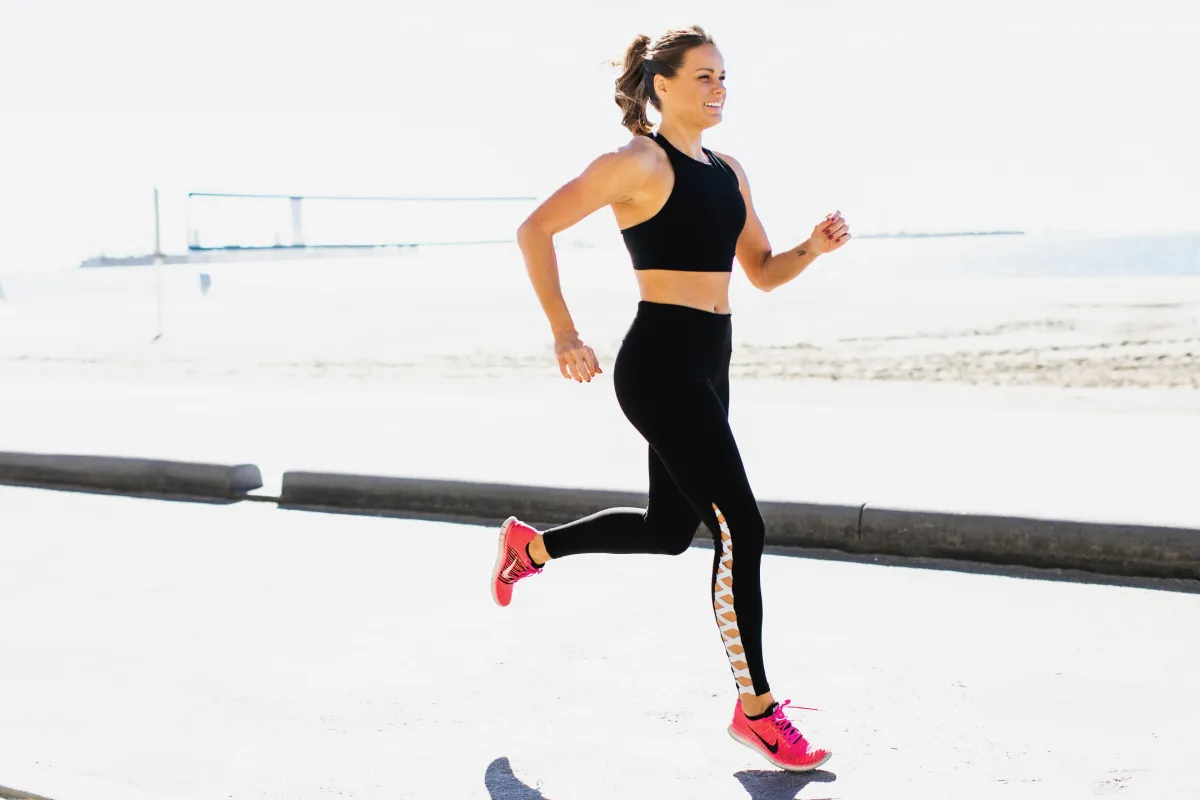
How to Return to Running After Pregnancy: A Postpartum Runner's Guide to Safe Exercise
How to Return to Running After Pregnancy: A Postpartum Runner's Guide to Safe Exercise
Personalized pelvic health care that meets you where you are and guides you to where you want to be.
The Reality of Postpartum Running: My Personal Journey
Before having my daughter, I was a dedicated runner—training 2-3 times per week and completing several marathons and half-marathons over the years. Running wasn't just exercise; it was my source of strength and joy. But like many postpartum women, I discovered that returning to running after pregnancy isn't as simple as lacing up your shoes.
The postpartum running struggle is real. After childbirth, I tried to get back into my routine, but my body had different plans. Headaches plagued me even when I thought I was being conservative with pace and distance. My body hurt in ways that felt wrong, not like the good muscle fatigue I remembered. The frustration was overwhelming—I knew what I was capable of, but my postpartum body just couldn't deliver.

Why Postpartum Running Feels Different
Pregnancy and childbirth create significant changes in your body that affect running performance:
Pelvic floor dysfunction from pregnancy and delivery
Core weakness and diastasis recti (abdominal separation)
Joint instability due to relaxin hormone effects
Postural changes from pregnancy and breastfeeding
Cardiovascular deconditioning from pregnancy modifications
These changes mean that returning to running postpartum requires a specialized approach—one that addresses the unique needs of perinatal women.
My 3 Essential Tips for Safe Postpartum Running
A few months ago, I decided to go "back to the basics" and started implementing three evidence-based habits. Since then, I've regained my confidence in running and significantly reduced headaches and body aches. Here's what worked:
1. Prioritize Postpartum Strength Training
Strength training isn't about spending hours in the gym or building unnecessary muscle. For postpartum runners, it's about rebuilding the foundation your body needs to handle running's demands.
Focus on at least one strength session per week targeting:
Single-leg movements for knee and hip stability
Core strengthening that addresses postpartum abdominal weakness
Posterior chain activation to counter postural changes
My favorite postpartum strength exercises:
Romanian deadlifts (great for glutes and hamstrings)
Single-leg step-ups (builds unilateral strength)
Farmer's carries (functional core stability)
Modified plank variations (safe core strengthening)
Science-backed insight: Research shows that postpartum women who incorporate strength training have better running mechanics and fewer injuries when returning to running.
2. Master the Run-Walk Method for Postpartum Exercise
When you want to return to running postpartum, don't rush the process. The run-walk method is the gold standard for safely rebuilding your running base.
My recommended starting point:
1 minute easy jog
4 minutes walking
Repeat 3-4 times
Total workout: 15-20 minutes
Progressive approach:
Week 1-2: 1 min run, 4 min walk
Week 3-4: 2 min run, 3 min walk
Week 5-6: 3 min run, 2 min walk
Continue progressing gradually
This method allows your cardiovascular system, muscles, and pelvic floor to adapt slowly to running's impact.
3. Use a Postpartum Return-to-Running Checklist
Before lacing up your running shoes, ensure your body is ready. Not all postpartum women are cleared to run at their six-week appointment. Your body needs adequate recovery time, and some may need specialized pelvic floor physical therapy.
Essential postpartum running readiness indicators:
No pelvic pain, pressure, or heaviness
No urinary leakage during exercise
Ability to perform single-leg movements without pain
Core strength sufficient for running demands
Cleared by healthcare provider for high-impact exercise
Red flags that indicate you need more time or pelvic floor PT:
Leaking urine during exercise
Pelvic pressure or heaviness
Lower back pain during or after activity
Feeling of incomplete pelvic floor recovery
I made a checklist that serves as a self-assessment tool to determine if your body is physically prepared to handle the demands of running. You should be able to complete all these movements without pain, leaking, heaviness, or pressure in your pelvic area. If you experience any of these symptoms, it's a sign your body needs more time to heal and/or you should reach out to a pelvic floor PT for more specific guidance!

When to Seek Professional Help
If you experience any concerning symptoms during your return to running, don't ignore them. As a Doctor of Physical Therapy specializing in perinatal pelvic health, I've seen many women who could have avoided injury with proper guidance.
Consider pelvic floor physical therapy if you have:
Persistent pelvic pain or pressure
Urinary incontinence during exercise
Difficulty with core strengthening
Recurring injuries when returning to running
Building Your Postpartum Running Foundation
Remember, returning to running after pregnancy is a journey, not a race. Your unique healing journey deserves patience and the right support. Every woman's postpartum experience is different, and what works for one may not work for another.
Key takeaways for successful postpartum running:
Start with strength training to rebuild your foundation
Use run-walk intervals to gradually increase intensity
Listen to your body and don't rush the process
Seek professional help if you experience concerning symptoms
Your running goals are valid, and with the right approach, you can return to the sport you love safely and confidently. Meeting you where you are in your postpartum journey is the first step toward building strength from the core and creating foundations for a stronger tomorrow.
Are you struggling with your return to running after pregnancy? East Nashville Pelvic Health offers specialized care for perinatal women, with personalized treatment plans that address your unique needs. Dr. Carly provides science-backed, empathy-driven care to help you achieve lasting relief and return to the activities you love.